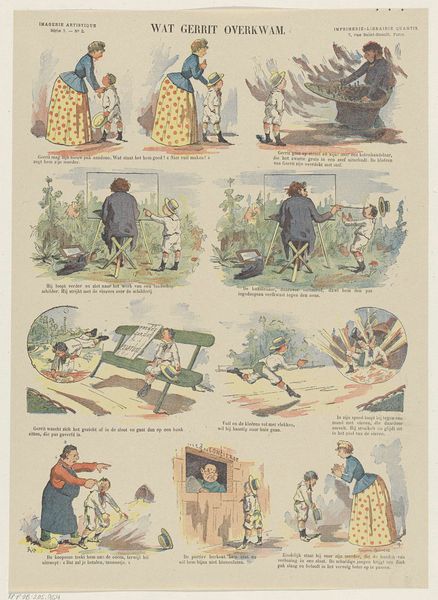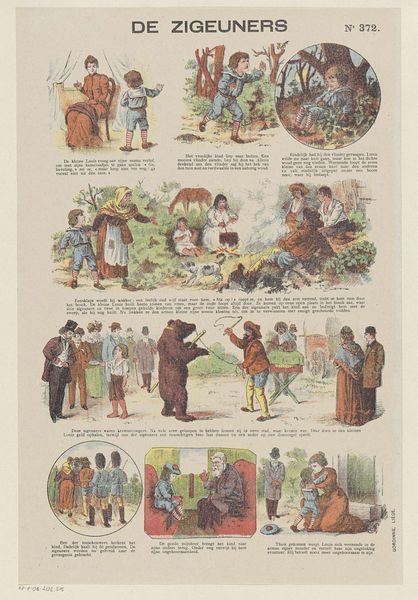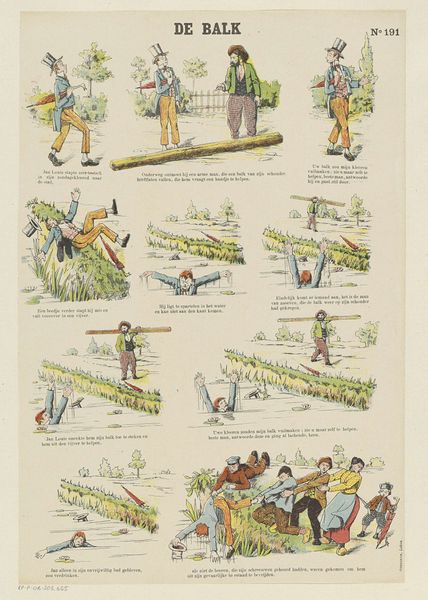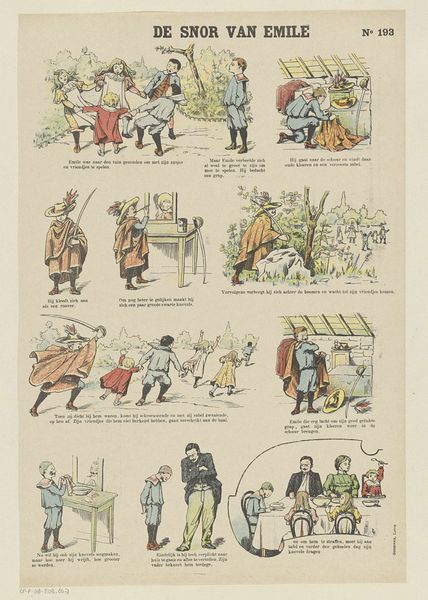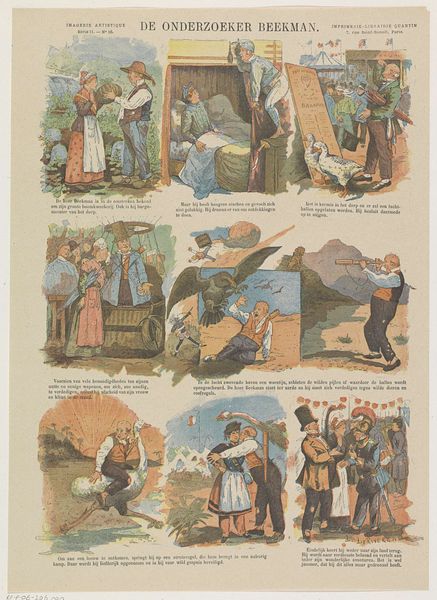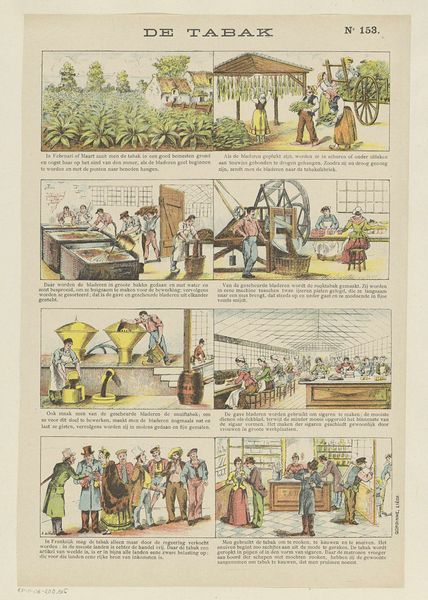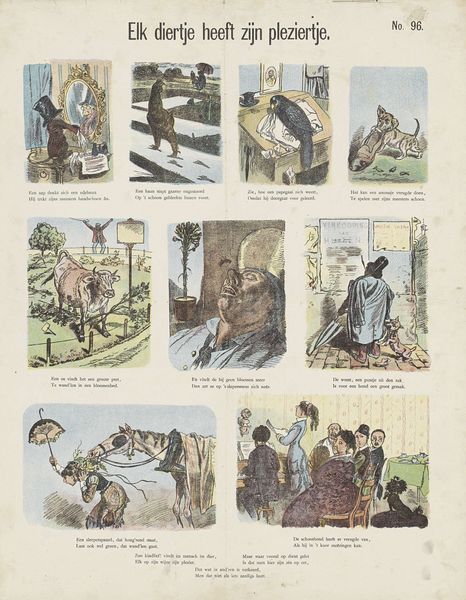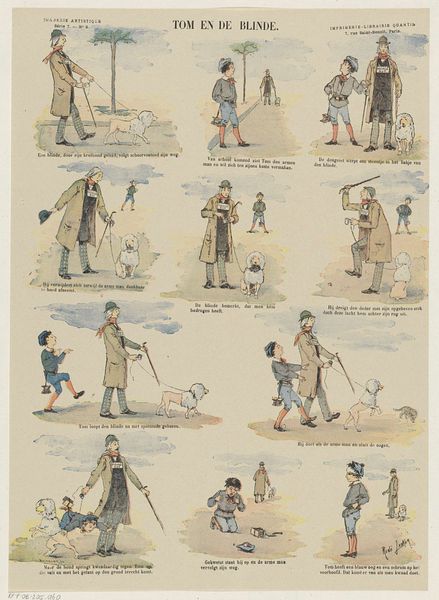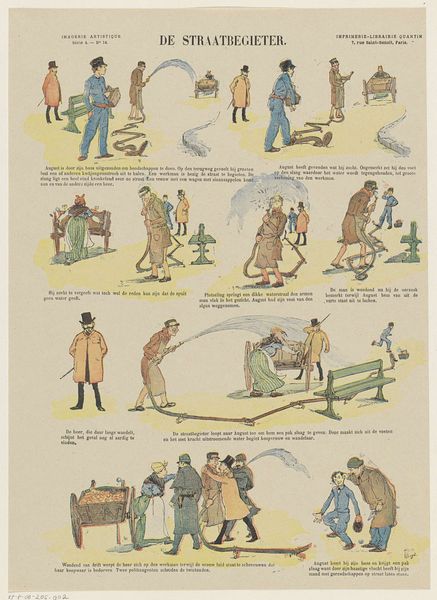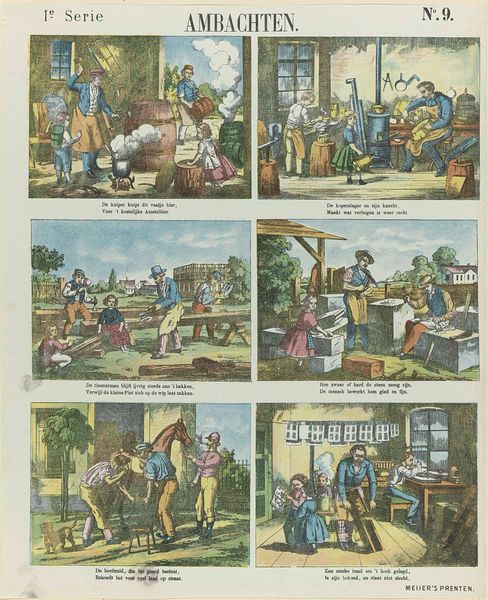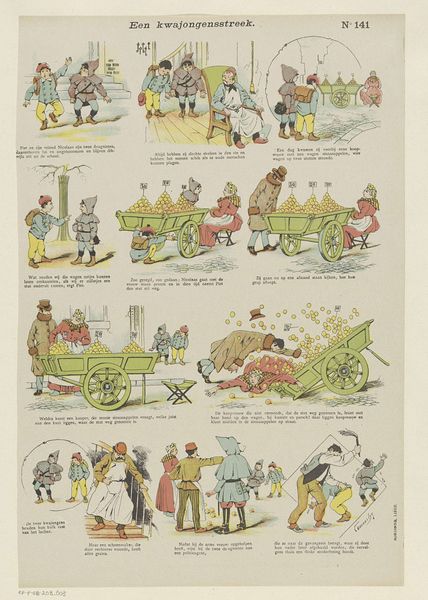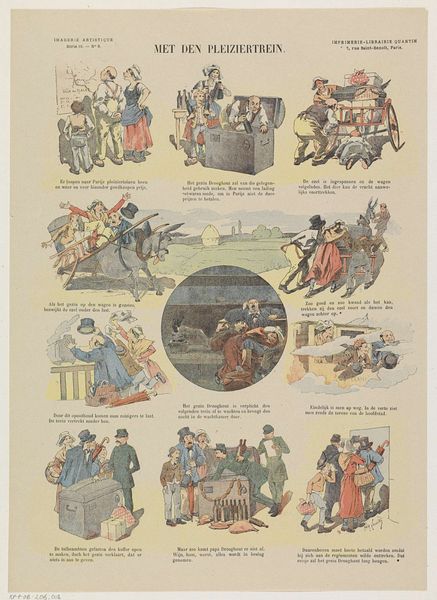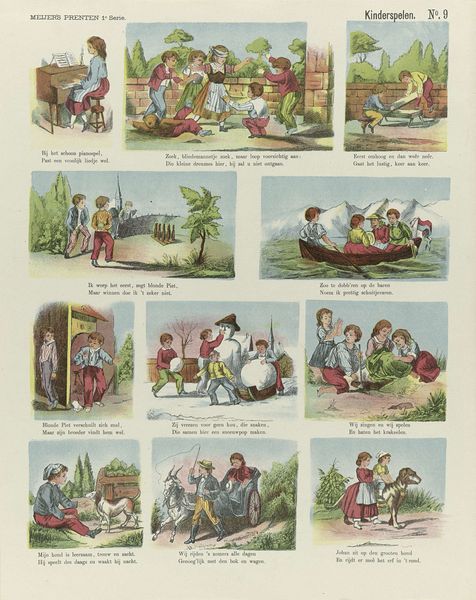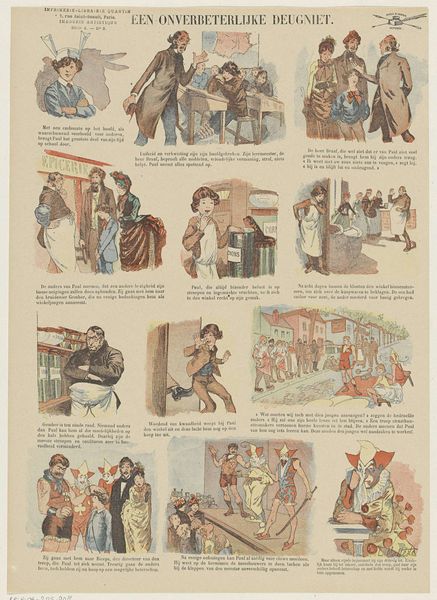
Dimensions: height 368 mm, width 266 mm
Copyright: Rijks Museum: Open Domain
Albert Quantin created this print titled *Een natuurwonder* sometime around the turn of the 20th century, and it offers a fascinating window into the values of the time. The work illustrates the story of a giant pumpkin, and the comic absurdity of the situation. It’s a testament to the fascination with nature and agriculture that was gaining popularity at the time. This enthusiasm, fueled by scientific advancements and a growing middle class with leisure time, is evident in the attention the pumpkin attracts from neighbors who spy on it with envy. Made in France, this lithograph reflects the societal values of the late 19th century and the role of institutions in shaping cultural trends. It hints at the social pressures to conform and the value placed on both hard work and the envy that can come with success. To understand this artwork, we might consider the history of agricultural societies, the rise of scientific gardening, and the commercialization of leisure activities in France during the late 1800s, using sources such as periodicals and marketing materials.
Comments
No comments
Be the first to comment and join the conversation on the ultimate creative platform.
